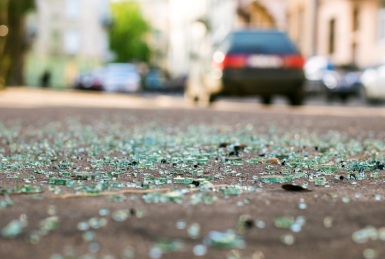
Victims of ‘hit and run’ accidents and their families suffer potentially long-term physical and emotional impacts. To highlight the scale of the problem in the UK, in just over 12% of road traffic accidents reported to the police where someone is injured (17,122), a ‘hit and run’ driver is involved. This is the second year in succession showing an increase, reversing the trend seen over the past decade.
A new report by the Department of Criminology at the University of Leicester provides insight into the reasons why drivers fail to stop after an accident. Alarmingly, a large number of defendants involved in the study didn’t think the incident was serious enough to report or were unaware of the legal requirement to report it.
Drivers who ‘hit and run’ can be convicted of the serious offences of failing to stop and failing to report an accident which could lead to punishments ranging from five to ten penalty points, discretionary disqualification, an unlimited fine or even imprisonment.
The research has been commissioned by MIB (Motor Insurers’ Bureau) which compensates the innocent victims of accidents with uninsured and ‘hit and run’ drivers.
The research involved a survey of 695 people who had been convicted of committing a ‘hit and run’ offence and subsequent interviews, providing the following insight into the reasons why people leave the scene of an accident:
- Many drivers think about their own self-preservation rather than any responsibility to report – for example, they may have criminality to hide or be driving without insurance
- In a lot of cases, drivers do not consider the incident to be serious and use this as a justification for failing to stop or report it
- Some drivers claim they have no knowledge of the accident occurring
- Many people who hit and run are under the influence of alcohol, impairing their judgment
The report goes on to categorise hit and run drivers into six groups that are linked to these motivational behaviours: the oblivious, the uncertain departers, the panickers and the rational escapists, the intimidated and the impaired or ‘non compos mentis.’
Dr Matt Hopkins, University of Leicester, said: “The reasons behind why people hit and run are complex but by breaking drivers down into categories we start to understand their motivations for leaving the scene of an accident. Interestingly, there seems to be a public perception that motoring offences are not ‘real crimes’ and therefore there is a tendency for drivers to justify their behaviour.”
The report identifies a number of recommendations which will help tackle the social and criminal issue of ‘hit and runs’. MIB will be looking to work with partners to explore the following:
- Educate drivers about their responsibilities and exactly what needs to be done in the event of an accident which may include a national campaign promoting accident responsibility awareness
- Develop easy ways of reporting accidents and consider the development of a web site or online app
- Raising awareness for drivers through theory tests and speed awareness courses
Ashton West, Chief Executive at MIB, said: “Hit and runs can have an ever-lasting impact on the victims and their families. We handle 15,000 claims a year for victims of ‘hit and runs’ and felt an imperative to commission the University of Leicester to do this research to gain an understanding of this area. We will be focusing on the recommendations that help raise awareness and educate drivers about their responsibilities.”
Department for Transport (DfT) data highlights that in 2015 there were a total of 140,056 road traffic accidents where an injury was sustained and in just over 12% of these accidents a ‘hit and run’ driver was involved, this equates to 17,122.

